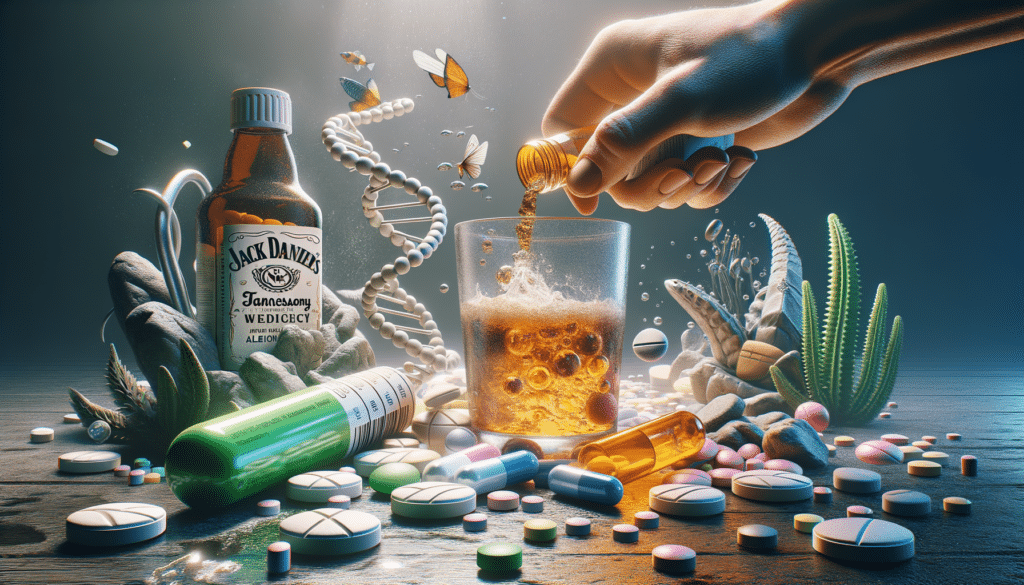Understanding Alcohol Cravings and Their Impact
Alcohol cravings can be a significant barrier for individuals seeking to reduce or eliminate their alcohol consumption. These cravings are often intense and can lead to relapse, even after a period of sobriety. Understanding the mechanisms behind these cravings is crucial in addressing them effectively. Cravings are typically a result of both psychological and physiological factors. Psychological triggers may include stress, social situations, or emotional distress, while physiological triggers are often due to changes in the brain’s chemistry caused by prolonged alcohol use.
When alcohol is consumed regularly, it alters the brain’s neurotransmitter systems, particularly those involving dopamine, which is associated with pleasure and reward. Over time, the brain becomes reliant on alcohol to maintain these neurotransmitter levels, leading to cravings when alcohol is absent. This dependency creates a cycle that can be challenging to break without intervention.
Addressing alcohol cravings involves a comprehensive approach that includes behavioral therapies, lifestyle changes, and, for some, medication. By combining these strategies, individuals can enhance their chances of achieving and maintaining sobriety. Recognizing the signs of cravings and understanding their underlying causes is the first step toward effective management.
Medications to Curb Alcohol Cravings: An Overview
For those struggling with alcohol dependence, medication can be a valuable tool in curbing cravings and supporting recovery. These medications work by targeting various pathways in the brain to reduce the desire for alcohol and mitigate withdrawal symptoms. There are several medications approved for this purpose, each with its unique mechanism of action.
One commonly used medication is Naltrexone, which works by blocking the opioid receptors in the brain, reducing the pleasurable effects of alcohol and thus diminishing the urge to drink. Another option is Acamprosate, which helps to stabilize the brain’s chemical balance disrupted by alcohol dependence. It is particularly effective in reducing the physical and emotional discomfort associated with abstinence.
Disulfiram is another medication that works by producing unpleasant effects when alcohol is consumed, such as nausea and flushing, thereby deterring individuals from drinking. While effective, it requires a high level of commitment and supervision.
These medications are not a cure for alcohol dependence but can significantly aid in the recovery process when used as part of a comprehensive treatment plan that includes counseling and support groups.
Comparing Alcohol Abuse Medications: Finding the Right Fit
Choosing the right medication to curb alcohol cravings depends on various factors, including the individual’s health status, the severity of dependence, and personal preferences. Here, we explore the differences between some of the most commonly used medications to aid in this decision-making process.
Naltrexone is often preferred for its ability to reduce the rewarding effects of alcohol, making it suitable for individuals who struggle with binge drinking. It can be administered orally or as a monthly injection, providing flexibility in treatment.
Acamprosate is particularly beneficial for those who have already stopped drinking and are seeking to maintain abstinence. It is generally well-tolerated and does not interact with alcohol, making it a safe option for those who may relapse.
Disulfiram, while effective, requires strict adherence to avoid adverse reactions when alcohol is consumed. It is best suited for individuals who are highly motivated and have a strong support system in place to ensure compliance.
- Naltrexone: Reduces pleasure from alcohol, suitable for binge drinkers.
- Acamprosate: Stabilizes brain chemistry, ideal for maintaining abstinence.
- Disulfiram: Deterrent effect, requires commitment.
Ultimately, the choice of medication should be made in consultation with a healthcare provider, who can tailor the treatment plan to the individual’s needs and circumstances.
Accessing Medications for Alcohol Cravings: What to Consider
Accessing medications to curb alcohol cravings requires navigating several considerations, including cost, availability, and insurance coverage. Understanding these factors can help individuals make informed decisions about their treatment options.
Many of these medications are available by prescription only, necessitating a visit to a healthcare provider. During the consultation, it’s important to discuss any potential side effects, interactions with other medications, and the overall treatment plan. Some medications may be covered by insurance, reducing out-of-pocket expenses, but it’s crucial to verify this with the insurance provider beforehand.
For those without insurance, generic versions of these medications may offer a more affordable alternative. Additionally, some healthcare providers and clinics offer sliding scale fees based on income, making treatment more accessible to those with financial constraints.
Support groups and community resources can also be invaluable in providing information and assistance in accessing these medications. By exploring all available options, individuals can find a solution that aligns with their financial situation and treatment goals.
Conclusion: Taking the Next Steps Toward Recovery
Managing alcohol cravings is a critical component of recovery from alcohol dependence. Medications can play a significant role in supporting individuals on this journey by reducing cravings and helping to maintain abstinence. However, they are most effective when used as part of a comprehensive treatment plan that includes therapy, lifestyle changes, and support networks.
Choosing the right medication involves careful consideration of various factors, including personal health, the severity of alcohol dependence, and financial considerations. Consulting with a healthcare provider is essential to tailor the treatment plan to the individual’s needs and ensure the best possible outcome.
Recovery from alcohol dependence is a challenging but achievable goal. With the right tools and support, individuals can overcome cravings and work toward a healthier, alcohol-free life. By taking informed steps and accessing the necessary resources, lasting recovery is within reach.


